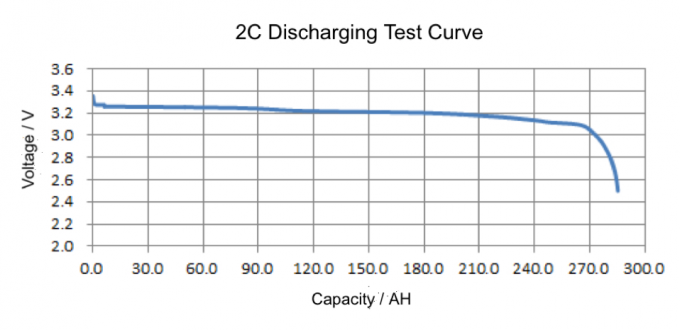Forum Discussion
Freep
Apr 14, 2021Explorer
So 3 Ton, what makes you think the Victron Smart Shunt is doing anything different than the other two meters?
I don't think you'd be able to tell a difference between 50 and 20 because of the flat discharge curve of LiFePo4 cells. Counting amps is going to be just as accurate as counting amps and taking voltage into account.
I think this is especially true in our RV application. The video you referenced was talking about EVs. That's a much different use case. In an EV application you're going to see drift by counting amps because of the high current and high amperage conditions that we just don't see in RV house battery applications.
It would be interesting to run some experiments on these meters to verify. I'm pretty sure Will Prouse has already done that, I'll have to check.
Here's a picture of the discharge curve at 2C for my battery. Keep in mind that discharging at 2C is not normal and the discharge rate would be much lower and therefor the curve would be even flatter until it falls off. Notice that the voltage doesn't drop below 3.2 volts until 210 AH have been discharged. That's 77% of capacity discharged or 23% remaining. Even then it's still above 3.1 volts until it hits 240 AH or 88% discharged(12%remaining). So in other words, I'd have to already be going too low before the meter would start having the accuracy problem stated in the video you shared.

If I accept (say for argument...) your idea that 20% is the cut-off point, then as was pointed out in both of the FLP discussions I pointed to, it’s the region below 50% SOC where coulomb counting alone begins to fall short (thus, 50-20’ish %) and where accuracy becomes a more driving concern...I take note of your position that this has only a negligible effect...
I don't think you'd be able to tell a difference between 50 and 20 because of the flat discharge curve of LiFePo4 cells. Counting amps is going to be just as accurate as counting amps and taking voltage into account.
I think this is especially true in our RV application. The video you referenced was talking about EVs. That's a much different use case. In an EV application you're going to see drift by counting amps because of the high current and high amperage conditions that we just don't see in RV house battery applications.
It would be interesting to run some experiments on these meters to verify. I'm pretty sure Will Prouse has already done that, I'll have to check.
Here's a picture of the discharge curve at 2C for my battery. Keep in mind that discharging at 2C is not normal and the discharge rate would be much lower and therefor the curve would be even flatter until it falls off. Notice that the voltage doesn't drop below 3.2 volts until 210 AH have been discharged. That's 77% of capacity discharged or 23% remaining. Even then it's still above 3.1 volts until it hits 240 AH or 88% discharged(12%remaining). So in other words, I'd have to already be going too low before the meter would start having the accuracy problem stated in the video you shared.

About Technical Issues
Having RV issues? Connect with others who have been in your shoes.24,340 PostsLatest Activity: Dec 02, 2025